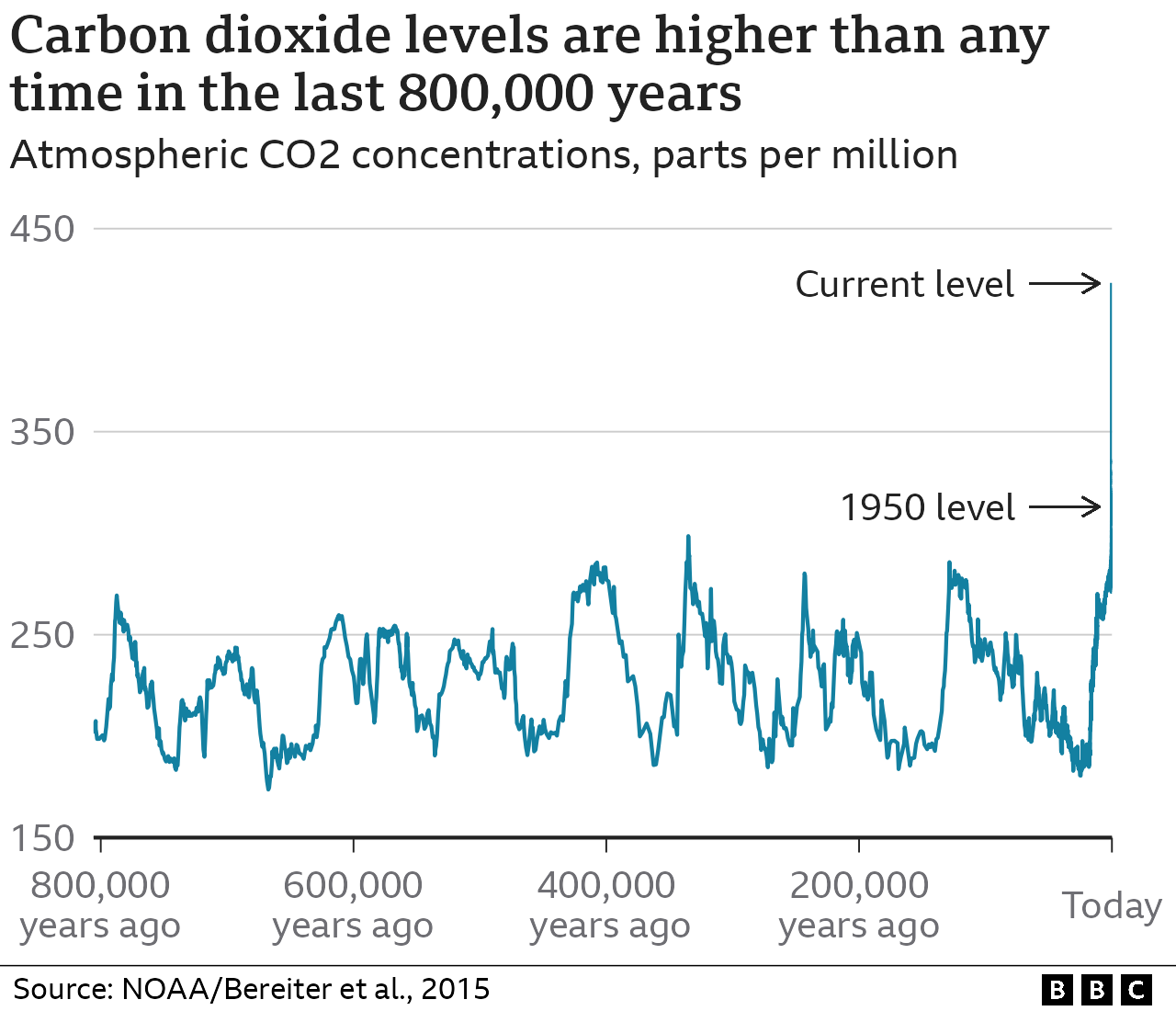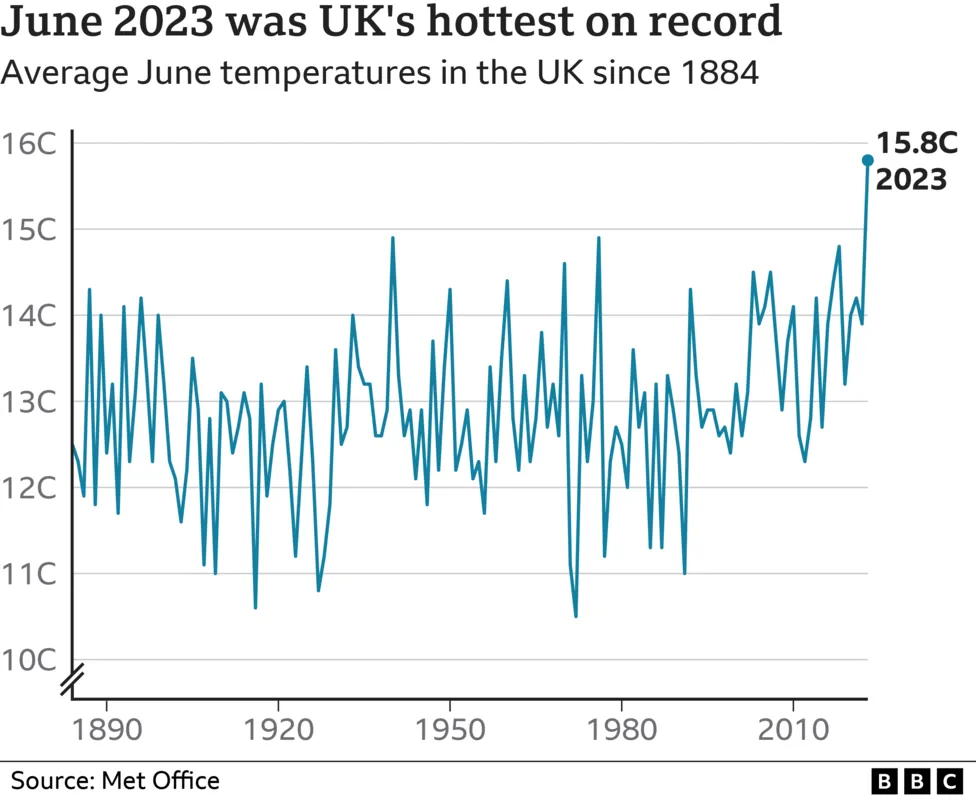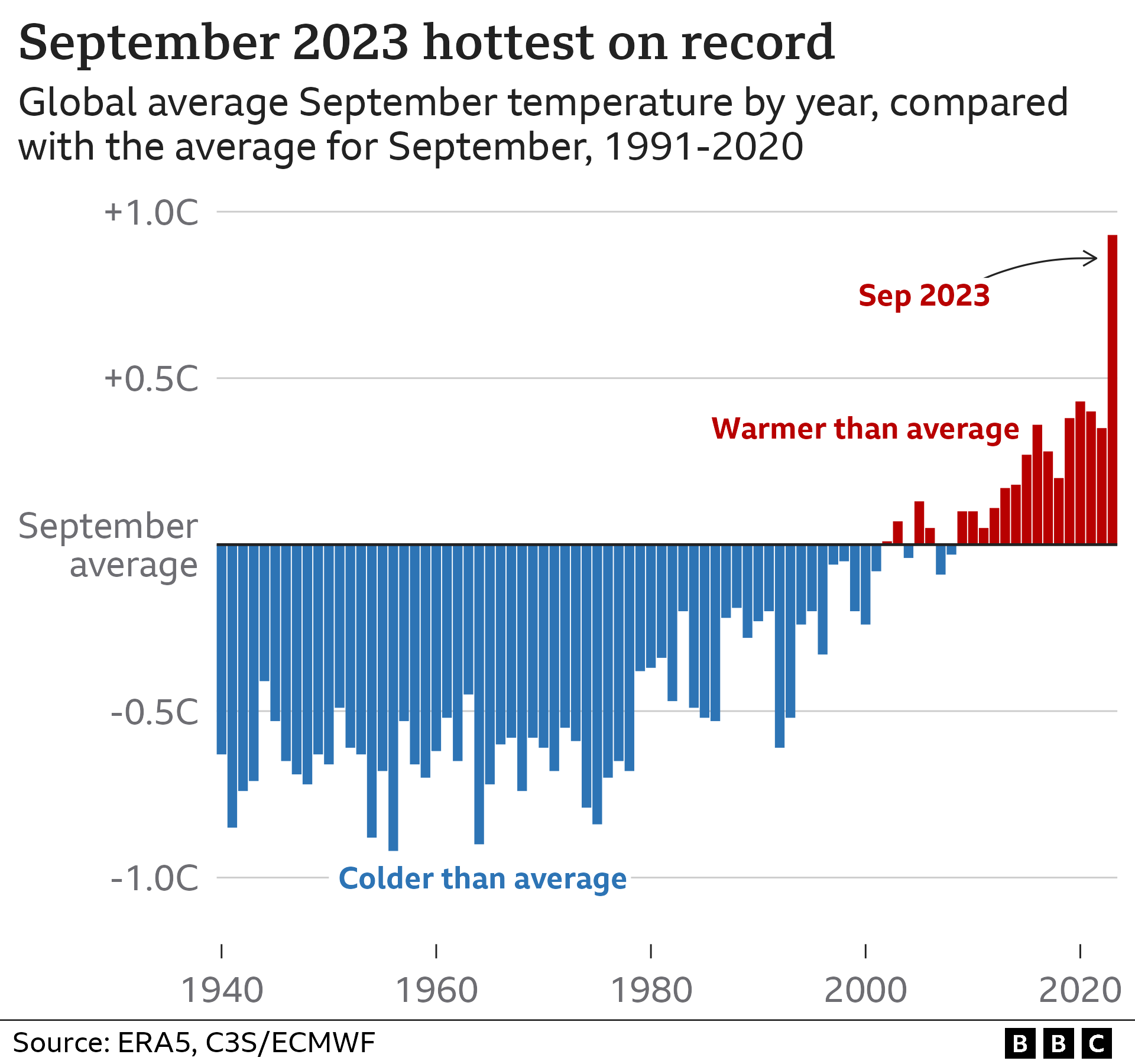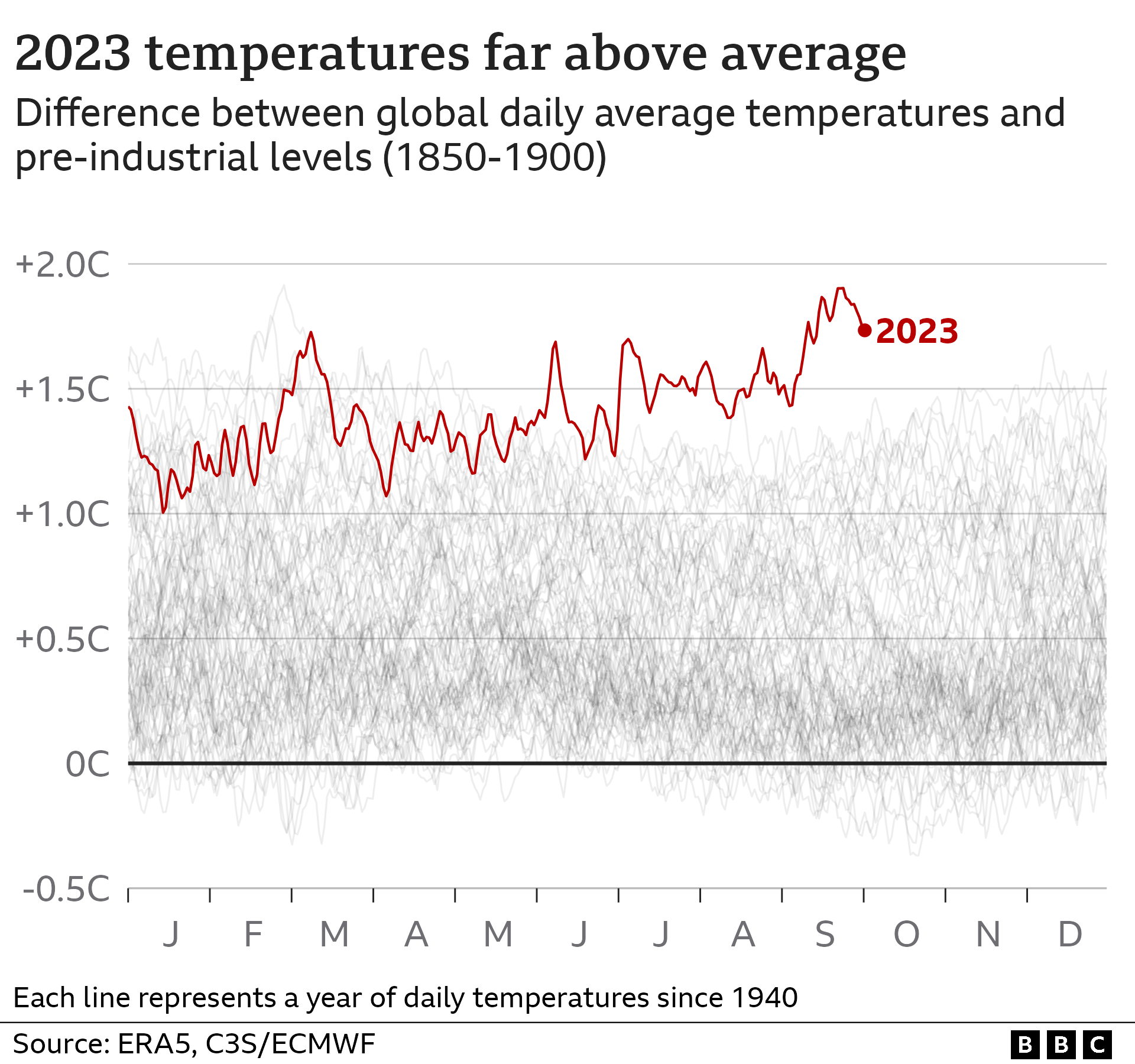I start this thread just for W63 who whilst he accepts that global warming is occurring he is in complete denial that it is caused by humans.
He also continues to poo-pooh and scientific evidence that that is the case.
I didn't set out this morning to start this thread but this article caught my eye today -
The climate change-denying TikTok post that won't go away
https://www.bbc.co.uk/news/technology-66023797
It's basically about how social media (in this case TikTok) is taking down climate change deniers posts - as being fake news. The article gave a link to this item...
What is climate change? A really simple guide
https://www.bbc.co.uk/news/science-environment-24021772
...which it turn gave a link to this one...
Climate change: How do we know it is happening and caused by humans?
https://www.bbc.co.uk/news/science-environment-58954530
The article explains - as we know - that climate change derives from increasing CO2 released into the atmosphere but goes on to state this...
There's a way we can show definitively where this extra CO2 came from. The carbon produced by burning fossil fuels has a distinctive chemical signature.
It then gives the following scientific article as its source...
How do we know that recent CO2 increases are due to human activities?
https://www.realclimate.org/index.php/archives/2004/12/how-do-we-know-that-recent-cosub2sub-increases-are-due-to-human-activities-updated/
I'm no scientist but what the article is saying is that CO2 is not just an element that is unique in itself but rather there are subtle differences to how it is made up - think of it like 'water' and 'heavy water' (or maybe you never heard of that?) - maybe then think of it as us humans, in that we are all definitely humans but have different sets of genes.
Basically there seems to be different 'masses' for the same element...
Isotopes are simply different atoms with the same chemical behavior (isotope means “same type”) but with different masses. Carbon is composed of three different isotopes, 14C, 13C and 12C. 12C is the most common. 13C is about 1% of the total. 14C accounts for only about 1 in 1 trillion carbon atoms.
The article goes on to say...
CO2 produced from burning fossil fuels or burning forests has quite a different isotopic composition from CO2 in the atmosphere. This is because plants have a preference for the lighter isotopes (12C vs. 13C); thus they have lower 13C/12C ratios. Since fossil fuels are ultimately derived from ancient plants, plants and fossil fuels all have roughly the same 13C/12C ratio – about 2% lower than that of the atmosphere. As CO2 from these materials is released into, and mixes with, the atmosphere, the average 13C/12C ratio of the atmosphere decreases.
Then it gets technical...
Isotope geochemists have developed time series of variations in the 14C and 13C concentrations of atmospheric CO2. One of the methods used is to measure the 13C/12C in tree rings, and use this to infer those same ratios in atmospheric CO2. This works because during photosynthesis, trees take up carbon from the atmosphere and lay this carbon down as plant organic material in the form of rings, providing a snapshot of the atmospheric composition of that time. If the ratio of 13C/12C in atmospheric CO2 goes up or down, so does the 13C/12C of the tree rings. This isn’t to say that the tree rings have the same isotopic composition as the atmosphere – as noted above, plants have a preference for the lighter isotopes, but as long as that preference doesn’t change much, the tree-ring changes will track the atmospheric changes.
Sequences of annual tree rings going back thousands of years have now been analyzed for their 13C/12C ratios. Because the age of each ring is precisely known** we can make a graph of the atmospheric 13C/12C ratio vs. time. What is found is at no time in the last 10,000 years are the 13C/12C ratios in the atmosphere as low as they are today. Furthermore, the 13C/12C ratios begin to decline dramatically just as the CO2 starts to increase — around 1850 AD. This is exactly what we expect if the increased CO2 is in fact due to fossil fuel burning. Furthermore, we can trace the absorption of CO2 into the ocean by measuring the 13C/12C ratio of surface ocean waters. While the data are not as complete as the tree ring data (we have only been making these measurements for a few decades) we observe what is expected: the surface ocean 13C/12C is decreasing. Measurements of 13C/12C on corals and sponges — whose carbonate shells reflect the ocean chemistry just as tree rings record the atmospheric chemistry — show that this decline began about the same time as in the atmosphere; that is, when human CO2 production began to accelerate in earnest.***
In addition to the data from tree rings, there are also of measurements of the 13C/12C ratio in the CO2 trapped in ice cores. The tree ring and ice core data both show that the total change in the 13C/12C ratio of the atmosphere since 1850 is about 0.15%. This sounds very small but is actually very large relative to natural variability. The results show that the full glacial-to-interglacial change in 13C/12C of the atmosphere — which took many thousand years — was about 0.03%, or about 5 times less than that observed in the last 150 years.
Put simply the scientific evidence is irrefutable that the current global warming IS man made and resulting in the burning of fossil fuels over the last 150 years.

He also continues to poo-pooh and scientific evidence that that is the case.
I didn't set out this morning to start this thread but this article caught my eye today -
The climate change-denying TikTok post that won't go away
https://www.bbc.co.uk/news/technology-66023797
It's basically about how social media (in this case TikTok) is taking down climate change deniers posts - as being fake news. The article gave a link to this item...
What is climate change? A really simple guide
https://www.bbc.co.uk/news/science-environment-24021772
...which it turn gave a link to this one...
Climate change: How do we know it is happening and caused by humans?
https://www.bbc.co.uk/news/science-environment-58954530
The article explains - as we know - that climate change derives from increasing CO2 released into the atmosphere but goes on to state this...
There's a way we can show definitively where this extra CO2 came from. The carbon produced by burning fossil fuels has a distinctive chemical signature.
It then gives the following scientific article as its source...
How do we know that recent CO2 increases are due to human activities?
https://www.realclimate.org/index.php/archives/2004/12/how-do-we-know-that-recent-cosub2sub-increases-are-due-to-human-activities-updated/
I'm no scientist but what the article is saying is that CO2 is not just an element that is unique in itself but rather there are subtle differences to how it is made up - think of it like 'water' and 'heavy water' (or maybe you never heard of that?) - maybe then think of it as us humans, in that we are all definitely humans but have different sets of genes.
Basically there seems to be different 'masses' for the same element...
Isotopes are simply different atoms with the same chemical behavior (isotope means “same type”) but with different masses. Carbon is composed of three different isotopes, 14C, 13C and 12C. 12C is the most common. 13C is about 1% of the total. 14C accounts for only about 1 in 1 trillion carbon atoms.
The article goes on to say...
CO2 produced from burning fossil fuels or burning forests has quite a different isotopic composition from CO2 in the atmosphere. This is because plants have a preference for the lighter isotopes (12C vs. 13C); thus they have lower 13C/12C ratios. Since fossil fuels are ultimately derived from ancient plants, plants and fossil fuels all have roughly the same 13C/12C ratio – about 2% lower than that of the atmosphere. As CO2 from these materials is released into, and mixes with, the atmosphere, the average 13C/12C ratio of the atmosphere decreases.
Then it gets technical...
Isotope geochemists have developed time series of variations in the 14C and 13C concentrations of atmospheric CO2. One of the methods used is to measure the 13C/12C in tree rings, and use this to infer those same ratios in atmospheric CO2. This works because during photosynthesis, trees take up carbon from the atmosphere and lay this carbon down as plant organic material in the form of rings, providing a snapshot of the atmospheric composition of that time. If the ratio of 13C/12C in atmospheric CO2 goes up or down, so does the 13C/12C of the tree rings. This isn’t to say that the tree rings have the same isotopic composition as the atmosphere – as noted above, plants have a preference for the lighter isotopes, but as long as that preference doesn’t change much, the tree-ring changes will track the atmospheric changes.
Sequences of annual tree rings going back thousands of years have now been analyzed for their 13C/12C ratios. Because the age of each ring is precisely known** we can make a graph of the atmospheric 13C/12C ratio vs. time. What is found is at no time in the last 10,000 years are the 13C/12C ratios in the atmosphere as low as they are today. Furthermore, the 13C/12C ratios begin to decline dramatically just as the CO2 starts to increase — around 1850 AD. This is exactly what we expect if the increased CO2 is in fact due to fossil fuel burning. Furthermore, we can trace the absorption of CO2 into the ocean by measuring the 13C/12C ratio of surface ocean waters. While the data are not as complete as the tree ring data (we have only been making these measurements for a few decades) we observe what is expected: the surface ocean 13C/12C is decreasing. Measurements of 13C/12C on corals and sponges — whose carbonate shells reflect the ocean chemistry just as tree rings record the atmospheric chemistry — show that this decline began about the same time as in the atmosphere; that is, when human CO2 production began to accelerate in earnest.***
In addition to the data from tree rings, there are also of measurements of the 13C/12C ratio in the CO2 trapped in ice cores. The tree ring and ice core data both show that the total change in the 13C/12C ratio of the atmosphere since 1850 is about 0.15%. This sounds very small but is actually very large relative to natural variability. The results show that the full glacial-to-interglacial change in 13C/12C of the atmosphere — which took many thousand years — was about 0.03%, or about 5 times less than that observed in the last 150 years.
Put simply the scientific evidence is irrefutable that the current global warming IS man made and resulting in the burning of fossil fuels over the last 150 years.


 Home
Home






